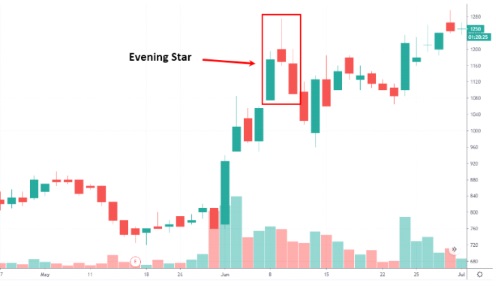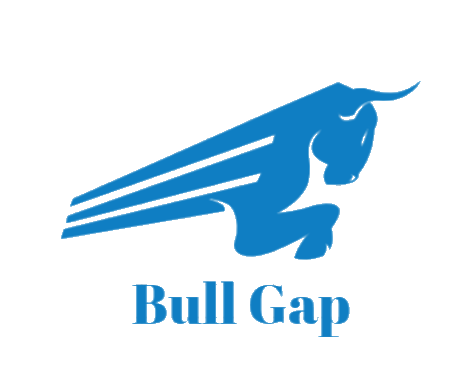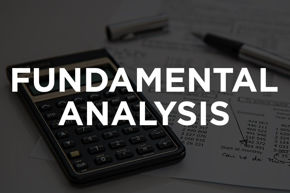Introduction to Candlestick Patterns
In carrying out trading activities, a trader uses various analytical tools. One of the many analytical tools used by traders is the candlestick.

Candlestick is a chart that displays the opening, the highest, the lowest, and the closing price. A candlestick has two components, namely the body (body candle) and tail (shadow). The line or tail that is above the body of the candle is called the upper shadow. While the line or tail that is under the body of the candle is called the lower shadow.
There are two colors that are usually used, namely green and red, or black and white. The green or white color on the candlestick represents the closing price higher than the opening price (positive). While the red or black color represents the closing price lower than the opening price (negative).
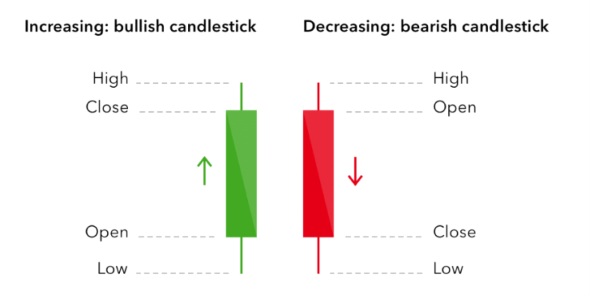
There are several basic patterns of candlesticks that must be known when analyzing price movements. Some of them are as follows.
Marubozu
Marubozu is a candlestick that has no shadow. Even if there are, the shadows are generally very short or almost invisible. This candlestick has a relatively long body. There are two types of Marubozu, namely Bullish Marubozu (White/Green Marubozu) and Bearish Marubozu (Black/Red Marubozu).
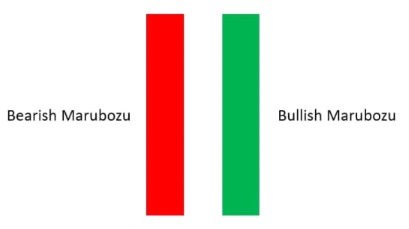
Long Candle
Long candle is a candlestick with a relatively long body. There are two types of long candles, namely Long Bullish Candle (green) and Long Bearish Candle (red). Unlike Marubozu, Long Candles have shadows that are clearly visible.
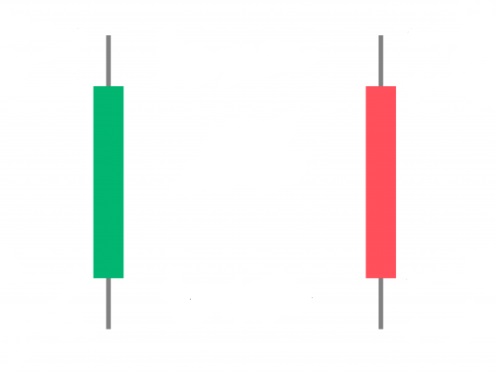
Spinning Candle
Spinning Tops are candlesticks that have long upper and lower shadows, but have a short body. Traders generally don't really care whether the body of the Spinning Tops is green or red. This candlestick illustrates "market indecision", whether it will strengthen or weaken.
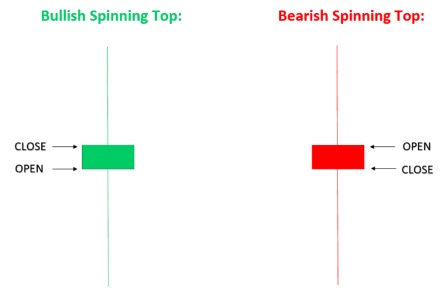
Doji
Doji are neutral candlestick patterns. Doji do not have a body, because the opening and closing prices are the same. A Doji can have a shadow, but its size is so short that it's hard to see, and at first glance like a thin line. The Doji candlestick pattern illustrates a balanced fight between buying pressure and selling pressure.
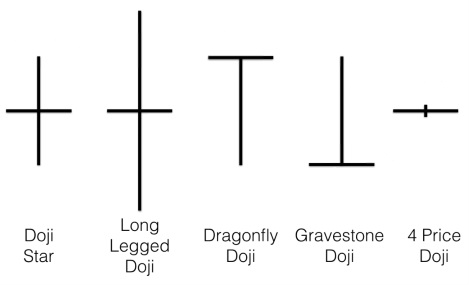
Hammer and Hanging Man
Hammer and Hanging Man is a "twin brother" pattern. This candlestick has a tiny body with a long lower shadow. The upper shadow is almost invisible. Even the perfect Hammer and Hanging Man have no upper shadow at all.
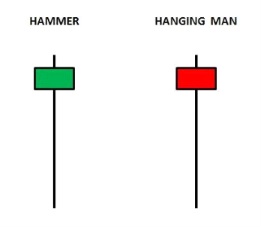
Inverted Hammer & Shooting Star
Inverted Hammer and Shooting Star are the opposite of Hammer and Hanging Man. This candlestick shape has a tiny body with a long upper shadow. Lower shadows are barely visible, even the perfect Inverted Hammer and Shooting Star shapes have no shadow at all.
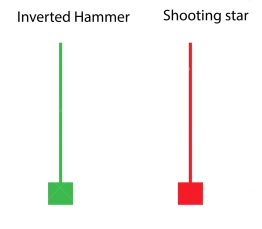
Engulfing Pattern
The engulfing pattern consists of 2 candles, where the last candle "engulf" the previous candle with a longer body candle. This Engulfing Pattern will be more valid if the candle has a short tail or no tail. In a trending market, Engulfing Patterns signal a reversal trend. This pattern shows a strong momentum shift from Sell to Buy during a downtrend, or from Buy to Sell in an uptrend. The stronger the trend, the higher the probability.
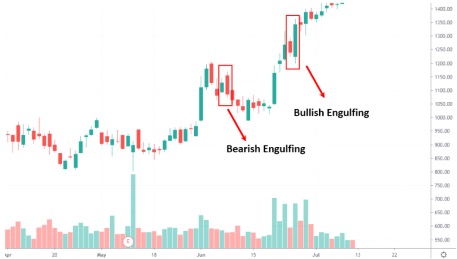
In a Bullish Engulfing Pattern, the first candle shows red (bearish candle) or Doji, and the next candle (engulfing candle) must be green (bullish candle) with a longer body. Bullish Engulfing Pattern is a signal to open a Buy position. However, to obtain accurate results, it is important to ensure that market movements are truly trending.
Conversely, in a Bearish Engulfing Pattern, the first candle shows green (bullish candle) or Doji, and the next candle (engulfing candle) must be red (bearish candle) with a longer body. Bearish Engulfing Pattern is a signal to open a Sell position.
Harami Pattern
Harami is a Japanese word that means "pregnancy". Why is it called like that? Because Harami candle patterns are formed from two candles where the two candles form a pattern like a woman who is pregnant. The size of the second body candle is always smaller and is within range (in the womb) of the first body candle.
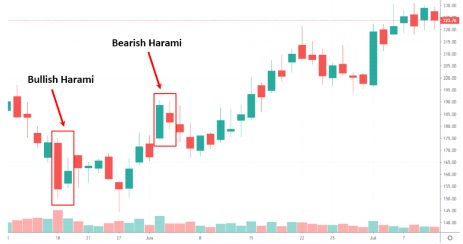
Harami Pattern is actually the opposite of Engulfing Pattern. Bullish Harami is marked by the appearance of a smaller bullish candlestick compared to the previous candlestick which is a bearish candlestick. While the Bearish Harami is marked by the appearance of a smaller bearish candle compared to the previous candlestick which is a bullish candle.
Dark Cloud Cover
Dark Cloud Cover is one of the bearish reversal patterns. This pattern consists of two candles, where the first candle is a bullish candle, while the second candle is a bearish candle. The Dark Cloud Cover is basically when the second candle has closed below the 50% mark of the first candle. This is different from the Bearish Engulfing Pattern, where the second candle will close below the first candle.
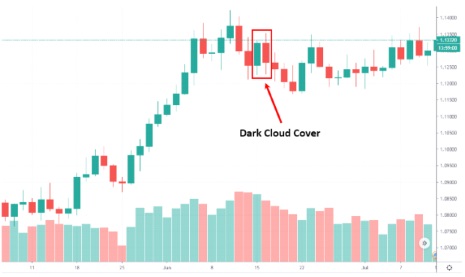
Piercing Line
Piercing Line is a candlestick pattern composed of bearish candles followed by bullish candles. This pattern appears when the downtrend, which then appears a bullish candle as an initial marker of reversal. Piercing Line can be formed because the second Open Candle is below the first close candle, then the second Close Candle passes through the first close body. The length of the second body candle must cover at least half of the first body candle.
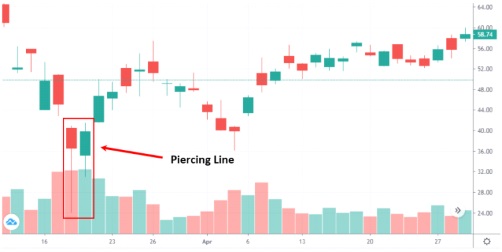
Morning Star
Morning Star is a candlestick pattern consisting of three candles. This pattern indicates a bullish trend reversal. On Morning Star, the first candlestick is a bearish candlestick, which is part of a downtrend. Then the second candlestick is a candlestick that has a smaller body, can be bullish or bearish candlestick. The third candlestick is a bullish candlestick that is longer than the second candlestick, but the length does not need to be the same as the first candlestick. The third candlestick's closing price position must exceed half of the first candlestick's body.
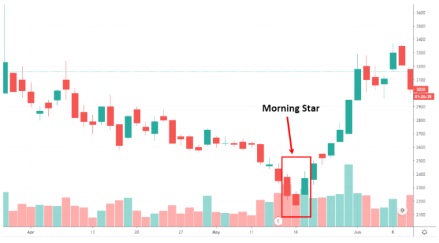
Evening Star
Evening Star is the opposite of Morning Star. This pattern indicates a bearish reversal pattern. On the Evening Star, the first candlestick is a bullish candlestick, and is part of an uptrend. Then the second candlestick is a candlestick that has a smaller body (can be bullish or bearish candle). If the second candlestick is a Doji, the pattern name is modified to Evening Doji Star.
